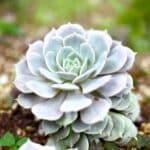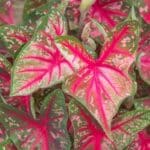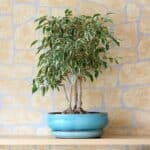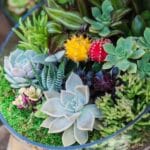Widely known for its attractive appearance, the begonia julau is one of the best and amazing houseplants you will ever see.
We certainly recommend this beautiful plant for you, as it will be a wonderful addition to your indoor plant collections. It features very rarely pink color leaves, which will help to add color and elegance to your home.
However, unlike some houseplants, the begonia julau care can be quite tricky; hence, you'll need to be extremely careful, especially in its lighting (keep away from direct sunlight) and watering (beware of over-watering) needs.
The plant also thrives in high humidity and warm temperature environs. The following are all you need to know about begonia julau care.
Table of Contents
What is Begonia Julau? | Begonia Julau Origin
A hybrid of the begonia family (over 1000 hybrids under the begonia variety), the begonia julau is a rare, pink-leaved Begonia variety that features attractive, rounded dark green leaves that possess pointed pink edges that look like they were painted pink by an artist.
It is called Begonia Julau because it is native to Julau city, a town in the Sarawak district of Borneo in Malaysia. It vividly explains why the houseplant thrives in high humidity and warm temperatures.
It also features unique pink markings showing clearly around the leaves, which is why it is also popularly called the Butterfly Begonia or the Angel Wing Begonia.
Read Also: Beautiful List of Flowers
Is Begonia Julau Easy To Care For?
Like we mentioned earlier, caring for begonia julau can be quite tricky, particularly with light and water care; hence, you have to give it the utmost attention it requires to give it the best growth.
In other words, unlike other houseplants, the julau needs the best care and attention possible, especially for inexperienced gardeners.
Begonia Julau Care and Growing Tips
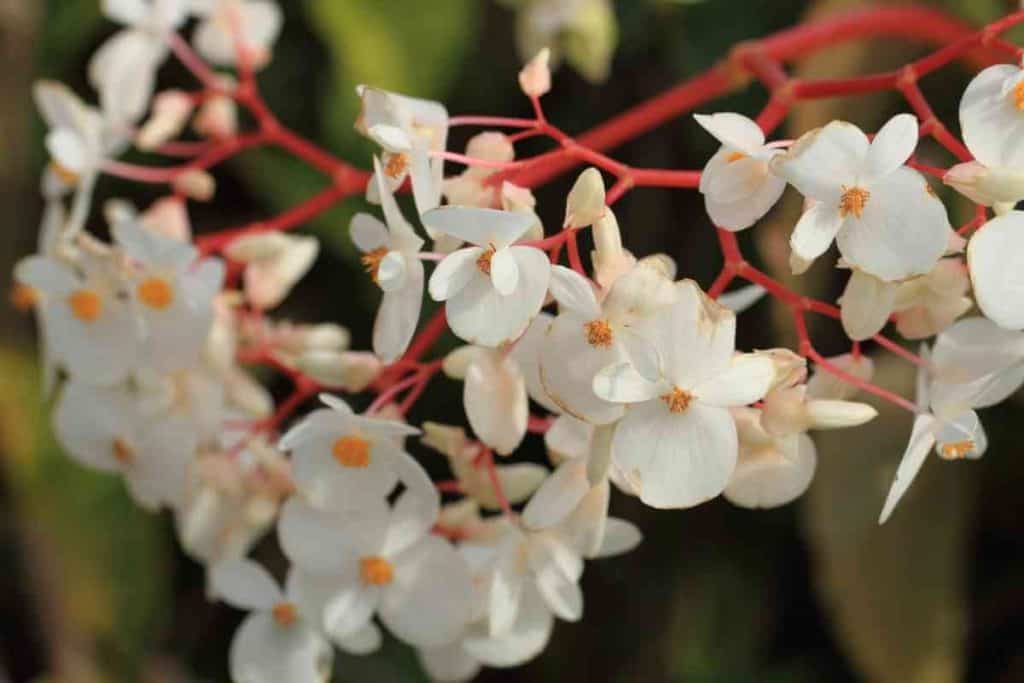
Below is everything you need to grow and care for begonia julau plant, even if you've never touched the plant before.
Let's get started!
Natural Habitat & Light Requirements
Begonia Julau is native to Julau city, a town in the Sarawak district of Borneo in Malaysia. It is mostly found in a partly shaded jungle, which restricts it to just the reflexes of sunlight. That is to say that begonia julau likes sunlight but not the scorching heat of direct sunlight.
It thrives in indirect light, so when growing them indoors, endeavor to place it by a south-facing window. On the other hand, it will not survive without sufficient sun, and in this condition will always alert you when something is wrong by dropping its leaves.
Again, try to place it close to a south-facing window, as it will help to maximize its growth. Julau can also survive artificial lighting if you put it in a terrarium.
You can use an effective fluorescent growing light, as it will generate sufficient lighting that will make your begonia julau grow healthy.
Begonia Julau Watering Requirements
The greatest challenge you will encounter when growing and caring for the begonia julau is its requirements.
Most importantly, make sure that the soil is slightly damp as often as possible but not excessively wet, as the begonia can be so sensitive to overwatering, which will result in its root rot.
Before you, water, ensure you examine the soil using your finger. If the top inch is dry, then it is the right time to water.
If you still feel confused about watering, we'd advise you to trade the part of caution and be patient until the leaves start drooping slightly, which is a sign that the plant is drying out.
Then, water the soil directly while ensuring that the leaves are dry. Also, due to how significant water is regarding the begonia, we'd advise you to apply caution by using 0.8 cups of water every 9days whenever it doesn't get direct sunlight and is potted in a 5.0" pot.
Humidity & Temperature
Humidity-wise, begonias need high humidity to grow well, which can be challenging when growing indoors. Keeping them in a bathroom or kitchen will go a long way towards solving the humidity challenge, as it is where it will likely get more moisture in the air.
You can also help your begonia get sufficient humidity by placing a saucer of water near the plant that will produce humidity as it evaporates. However, avoid setting the pot in the saucer of water, as it can cause excessive moist root and rot.
Don't spray the plant with water, as it's better to keep the leaves dry. Temperature-wise, make sure its air is warm enough. It shouldn't be less than 70ºF (21ºC), but it thrives in warmer air temperatures up to 66ºF (30ºC).
However, much like other begonia varieties, the julau is not good in a draft and, therefore, doesn't enjoy a cold corner in your home.
If the temperature regularly falls below 70ºF (21ºC), you could use a heat matt to keep the plant at its ideal temperature.
Read Also: Blue Star Creeper Care
Soil Requirements
Begonia Julau requires you to use a well-draining potting compost, which will dampen it but never entirely wet. Most gardeners will add extra layers to help in its drainage. It is made up of sphagnum moss in terrariums for julau.
Also, you can mix it with perlite, sand or grit and a layer of charcoal, and lastly, pebbles that will help in its drainage.
It tends to run through the soil, reach the next layer of moss or sand, and then charcoal whenever you water. It lands and stays in the pebbles, where the roots can seek water out if they need it.
The additional height that this layering offers equally allows the plant more breathing space around the roots.
Fertilizing Needs
Most potting soils come with ample nutrients, which plants utilize to produce new growth. Therefore, by the time the begonia julau has depleted the nutrients in its soil, it's likely grown enough to the extent of requiring a bigger pot anyway.
However, to renew this plant's nutrients, repot it after it doubles in size or every once in a year. Also, note that applying a liquid houseplant fertilizer according to the package instructions every two weeks will also help produce larger leaves and blooms.
Planting (Potting & Repotting)
Begonia Julau requires planting using a soilless potting mix in a pot that has proper drainage underneath.
The plant is especially prone to root rot; therefore, it is never advisable to add a layer of pebbles or broken shards of old terracotta pots underneath for additional drainage. Ensure you only repot the plant in one size bigger pot when the pot is root-bound.
How to Prune Begonia Julau
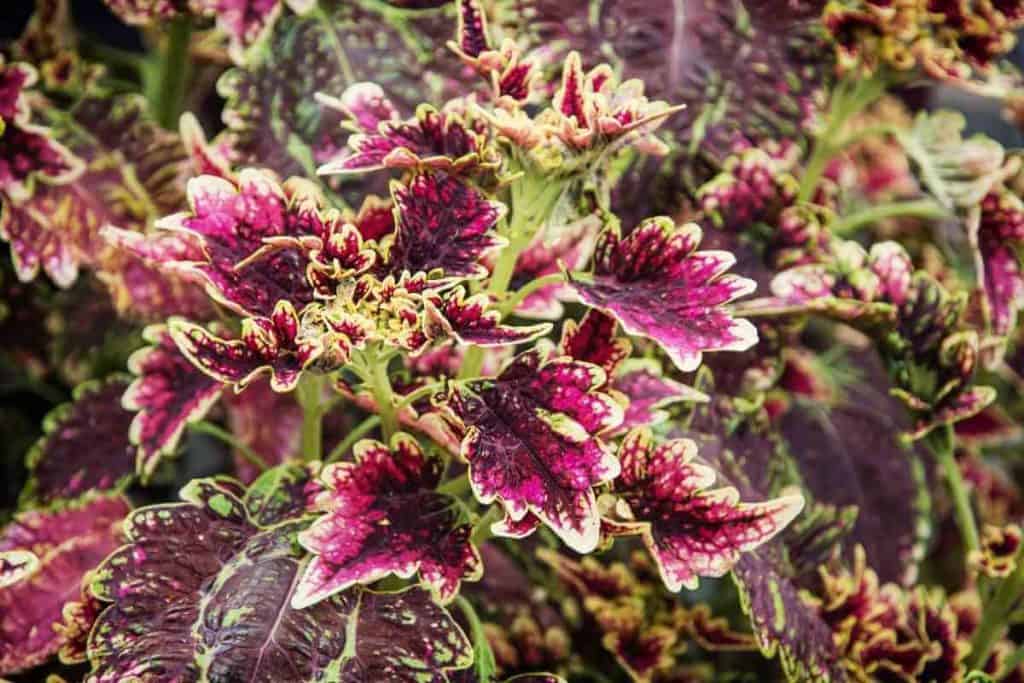
Begonia Julau is a plant that grows gradually but tends to become quite taller than expected. If you are lucky, its maximum height could be around 14" (35.5cm).
It features a central cane resembling bamboo, and some gardeners will tell you that the plant will become top-heavy.
At that point, it is very important to prune it to prevent your plant from falling over. You can gently cut the top shoots from the plant and use them for propagation, even though it is a tricky plant that will probably lack the generosity that other begonia varieties have in reproducing from leaves and stems.
However, it would be best to avoid cutting the leaves if the plants have less than six leaves. You can be patient until it produces up to nine or ten leaves; only then are you permitted to prune.
If your plant is bigger with side-shoots, you're free to cut an entire stem that will propagate much more easily. Be careful when pruning a new young plant.
Read Also: How To Grow Citronella Plant From Cutting
Begonia Julau Propagation
Propagation of begonia julau can be carried out using two methods, namely, stem cutting and leaf cutting. The leaf-cutting technique is considered as less successful of the two. Let's briefly highlight the two propagation methods below:
Stem Cuttings
- Cut out a small piece of stem using a scissors and ensure that 2 or 3 leaves are attached
- Place the cutting in water and expose it to lots of indirect sunlight (no direct sunlight) for a week or so.
- If roots start developing, pot the plant in the regular begonia julau soil mix with perlite and sphagnum moss.
You can also dip stem cuttings into hormone rooting powder and pot it in compost with some perlite and sphagnum to help drainage.
Water the pot generously. Then, inspect for roots after 2-3 weeks. Meanwhile, don't cease to water frequently.
Leaf cuttings
- With clean pruning shears, carefully remove a leaf from your plant.
- Cut it right back to the stem.
- Then divide the leaf into 5-6 smaller pieces, ensuring a vein in each cutting.
- Place it upright in the soil.
The roots will begin to form after about one month but be warned that a full plant takes longer to grow. Don't forget that single leaf propagation works better for Type 2, tall, with a central stem, same as bamboo.
Cut the end of the leaf into a point, then dip it directly into the soil. The same watering system of stem cutting also applies to the leaf-cutting method.
Begonia Julau Varieties
Generally, the begonia has over 1,000 species and many more varieties and hybrids, and they come in countless colors, sizes, and shapes. We have four main types, namely, fibrous, tuberous, canes, and rhizomatous.
However, as far as the begonia julau is concerned, it has two main varieties: Begonia Julau Type 1 and Begonia Julau Type 2. The former is its official name, and due to the resemblance, it's being confused with the latter, which is considered its close relative.
Again, type 1 is smaller and more delicate in patterning than type 2, which is a bit taller with longer leaves, and both possess pink leaf patterning.
However, the same care tips apply irrespective of the differences in size and name between both varieties. In 2021, type 1 was even called U number 684 by experts to prevent mistaken identity.
Frequently Asked Questions
Why Do The Leaves Of Begonia Julau Turn Yellow?
The most significant reason the begonia julau leaves turn yellow is water stress, be it due to under-watering or excessive watering. We've mentioned earlier in this post that this plant thrives in moist soil but is not too wet.
So, if the leaves start turning yellow, examine the soil in the pot to see if it is either dry or soggy. If it is soggy, make sure you drain the excess water from the pot, and if it feels too dry, water the plant.
Also, consider the plant's location, as direct heat of sunlight can burn its leaf and change its color to yellow.
Why Do The Leaves of Begonia Julau Turn Brown?
If the begonia julau has leaves turning brown at the edges, then the most obvious explanation is under-watering.
The plant prefers a moist area such as a terrarium, with heat, moisture, shelter, and sufficient light. This stimulates a forest floor, where the julau receives moisture, rich soil, and indirect sunlight.
Is the Begonia Julau Toxic?
Surely, the begonia julau is a toxic plant. Therefore, it would be best to keep it out of the reach of children, dogs, and even cats. Note that the most poisonous part of the julau is the root or tuber. The leaves of begonia julau have a sour taste; hence, it is not attractive for several nibblers.
Again, just like other begonia varieties, the julau features oxalic acid present in the plant's tissue; therefore, no human or pet should eat the leaves, stems, or tuber.
In several areas of the world, there're stories of people who have tasted little bits of begonias and survived. Even at that, it is certainly not advisable.
Why Is The Begonia Julau Wilting?
The best explanation for this could be the dryness of the soil. If the soil for which the begonia julau is planted feels so dry, you need to water it as soon as possible.
You don't only have to use a small amount of water; ensure the water would be enough to keep it moist for some time, as the plant thrives in moist conditions.
Also, ensure that the pot you plant the julau features drainage holes, as it will allow excess water to drain out, thus, preventing the roots from rotting.
Once you have watered the wilting begonia, you will have to be patient for at least a day before the plant starts to recover, then you can create a watering system.
What Is The Difference Between Begonia Julau Type 1 & Type 2?
Despite the glaring similarities, you will find few differences between the julau type 1 and type 2. The most notable and obvious difference is that the former is smaller and more delicate than the latter, which is taller with longer leaves.
Read Also: Mulberry Tree Care

